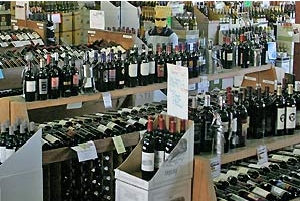As a part-time manager of a wine retail shop in British Columbia, and a full-time marketer, I’m bringing a level of analysis to our business that is treading new ground at the small, independent store level in wine retail while providing interesting results that apply to both wine consumers and retailers at-large in North America.
In a word, it’s all about “trust.”

Every February my store, Bowen Island Cold Beer and Wine in British Columbia, conducts an annual customer survey. This year’s version was our fourth edition. I use the survey to gather quantitative and qualitative data to help understand our customers, their preferences and, especially, how we can improve the store and our service. This is but one of the tools we use to check that what we do is delivering results to the top and bottom lines and to find out what we should be doing better in the future. This ongoing analysis has helped us achieve a 60% increase in wine sales over the last two years.
It’s not all about sales and money, though; it’s really about the customers, which makes my findings all the more interesting.
Inspired by both the apparent lack of outside influence on how people select wine coupled with some very interesting discussions online about blogging influence, I decided to ask our customers what influenced them when it came to selecting a wine for the first time at any store.
While the findings are narrowly focused on what happens once a customer has walked through the store doors rather than online purchasing, or external store marketing, I think it will be of interest to anyone associated with wine retail, wineries, wine writing, or marketing in general. These results have been tested with dozens of wine buyers outside of our local market in Canada and I have found the results in the demographic segment analyses to be quite—sometimes uncannily—accurate.
A brief profile of our respondents:
- Equally male and female.
- They would not class themselves generally as wine collectors or experts. Most shop for wine for reasonably immediate consumption.
- They buy 2 bottles per week for their household (median for all respondents), but the over 40 age group buys three bottles per week at median. To put this into perspective, the respondents directly buy over 10,000 bottles of wine per annum. The majority of respondents buy wine at other stores on a regular basis over any given month—typically three or four stores including us. From past surveys we estimate we harness about 40% of their wine purchases.
The chart below summarizes the results from the survey.
From this data I have written a study on what influences wine consumers to try a wine for the first time. The analysis includes a propensity to be influenced by:
- Gender: Females are 30% more likely to be influenced by bottle labels.
- Age: Over 40 year olds heavily rely on trusted staff members.
- Volume Purchased: Bottle labels are extraordinarily important to low volume buyers.
- Price Point: The higher the price point of a wine, the more likely a buyer is to be influenced by independent bloggers.
- Use of Social Media: Tendency towards influence by press and blog sources for social media users.
The working definition in this survey of an independent or unaffiliated blogger is one who reviews wines but who is not employed in the wine trade, not affiliated with a specific store and is not regularly published in newspapers or magazines.
Regarding stores—online or bricks-and-mortar— I found that blogs, tweets, Facebook fanpages and even advertising have a positive promotional impact in drawing people to their business and therefore impact sales because the consumer a) knows the wine is available and b) already is familiar with the store or staff. The effectiveness of these store promotion tools was outside the scope of our questionnaire but are/will be absolutely essential marketing tools for most stores.
I was somewhat surprised that bloggers showed up at all in the results. While only 12% of the sample actually rated unaffiliated bloggers as somewhat or very important, I suspect that if we had asked the same question four years ago we would be celebrating that number as a significant growth of influence. This influence still seems tenuous. The only respondent who rated blogging as an important influence and was also able to provide a name/link to the blog explained why they trusted it—the blogger was already a friend in real life. Possibly other respondents thought of store blogs or press blogs as independent, notwithstanding the definition given in the question.
However, even respondents who use social media rated Trusted Store Staff five times more important than blogging influence. There is not a strict correlation between being engaged in social media and reading blogs either as some non-social media user’s and respondents rated blogs as important.
The front-line influence of the “Trusted Sales Staff” providing immediate advice at the time of demand will continue to be important for the foreseeable future as they can out-influence most other sources at the time of purchase. This strength indicates to me that there is also a need for wholesalers, agents, and wineries to enhance their support to the front-line staff of their retailers as a way of most profitably impacting sales.
The closely grouped second pair—signage and labels—showed up as more significant than I had expected. In post-result testing I’d suggest that labels are actually more important. Given the +/- 10% error range it is quite possible that these two segments could have switched anyway in a larger sample. The segmentation charts in the full report offer insight on how to tune rather than change in-store sales and marketing in most cases.
Lastly, what are my key takeaways from this study for application in our store?
- Increase/improve our signage – we rely too much on trusted staff.
- Invest more in training my staff – even the one-shift stand-ins.
- Work more closely with our local restaurants in cross promotion of their wines by-the-glass on wines we stock.
- More careful evaluation of bottle labels in selecting wines to inventory.
If you would like to download a copy of the study please email me at pdrickett@hotmail.com with the subject line “It’s All About Trust” and I’ll gladly send you a link to the document.

Paul has been applying 30 years of high tech sales & marketing expertise to the business of wine retail for the past 3 years. In his other life he is a consultant to companies needing to improve their sales, marketing and operations through effective use of business intelligence data melded with primary and secondary research.



![Reblog this post [with Zemanta]](http://img.zemanta.com/reblog_e.png?x-id=af9fa803-f469-4d9f-99d2-a9218353e257)